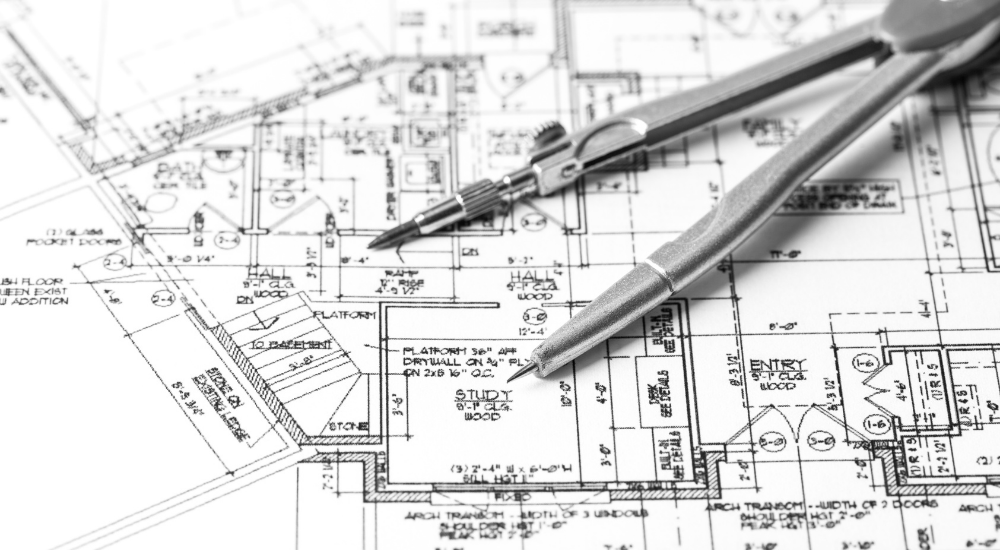Architect-Approved Home Improvement Ideas
Architect-Approved Home Improvement Ideas
Blog Article
Discover the Crucial Abilities and Top Qualities Every Architect Should Have
As a designer, you know that success in your field surpasses simply technological abilities. It has to do with blending creative thinking with usefulness, promoting partnership, and managing jobs successfully. Each top quality plays an important function in your ability to design areas that inspire and operate well. What are the particular abilities that can absolutely establish you apart? Let's discover the crucial attributes every Architect should grow to thrive in this ever-evolving profession.
Creativity and Development
Creative thinking and innovation are at the heart of style, driving the layout of spaces that motivate and function flawlessly. As an architect, you'll need to believe outside the box, pushing limits to create unique services for your clients. You'll frequently explore new materials, strategies, and innovations to improve your styles. Welcoming innovation indicates remaining ahead of fads while being versatile to change.
You'll additionally draw inspiration from different resources-- nature, art, and even daily life can spark fresh concepts. This capability to mix creative thinking with functionality permits you to deal with complicated troubles, ensuring your designs satisfy both functional and aesthetic requirements.
Strong Communication Abilities
While making remarkable spaces requires creative thinking, strong interaction abilities are equally as crucial for designers. You need to communicate your ideas clearly to customers, specialists, and staff member. Paying attention is equally as crucial; understanding your customer's vision aids you create layouts that genuinely fulfill their requirements.
You'll usually have to discuss complex concepts in a method that's very easy to realize, whether you're presenting a proposition or discussing materials. Efficient interaction cultivates cooperation, making sure everyone is on the same web page throughout the project.
Structure relationships is vital, as well. When you establish trust fund and relationship, customers are extra most likely to share their concerns and feedback, bring about far better end results.
Last but not least, don't ignore the power of body language and visual help. They can enhance your message and make your presentations a lot more engaging. Solid communication skills not just raise your layouts yet likewise strengthen your expert partnerships in the building world.
Technical Proficiency in Design Software
As you navigate the ever-evolving globe of style, mastering design software becomes necessary for translating your imaginative ideas into tangible strategies. Familiarizing on your own with programs like AutoCAD, Revit, and SketchUp will certainly not only boost your design capacities but also improve your operations. These tools enable you to produce detailed illustrations, 3D versions, and also simulations that can assist you envision and provide your ideas a lot more successfully.
Frequently updating your abilities and checking out new features can establish you apart from your peers, guaranteeing your layouts are specific and cutting-edge. Inevitably, technical efficiency in layout software is a keystone of effective architecture, aiding you bring your visions to life.
Comprehending of Engineering Principles

Recognizing engineering concepts additionally allows you to expect possible challenges early in the design process. When you know just how various materials behave under different problems, you can make educated choices that boost your designs. Your designs need to not only be cosmetically pleasing yet sustainable and additionally practical.
Furthermore, a solid grasp of design principles enables you to introduce within restraints. You can push innovative boundaries while still adhering to security requirements. Ultimately, this understanding enriches your building practice and sets you apart in an affordable area.
Job Monitoring Talents
Efficient project monitoring capacities are necessary for designers, allowing you to supervise all facets of a job from conception to conclusion. You'll need to collaborate with various stakeholders, consisting of professionals, customers, and designers, guaranteeing everybody's on the same web page. Establishing clear goals, timelines, and budgets is fundamental; it assists you maintain the project on track and within scope.
As an engineer, you ought to additionally be experienced in jeopardy monitoring, recognizing potential issues before they escalate. Strong communication skills are essential, enabling you to express your vision and inspire your group. You'll gain from being organized and detail-oriented, as this aids streamline processes and avoid pricey delays.
Additionally, adaptability is essential; tasks frequently evolve, and being adaptable enables you to react effectively to adjustments. Inevitably, your job administration abilities can greatly impact the success of your building endeavors, ensuring you provide high quality outcomes in a timely manner and within budget plan.
Attention to Information
While taking care of projects is essential, your attention to detail can make a considerable distinction in the quality of your job. Every line you attract, every material you choose, and every tiny requirements you keep in mind adds to the overall success of a job. You need to be meticulous, ensuring that your designs not just satisfy visual requirements yet additionally stick to constructing codes and laws.
Missing also a tiny information can bring about expensive alterations or safety issues down the line. By cultivating an eager eye for detail, you boost your capability to detect potential troubles prior to they rise. This watchfulness not only conserves you time and sources yet likewise constructs your reputation as a reliable Architect. Remember, it's frequently the tiniest information that elevate a project from good to exceptional. Accept this ability, and allow it guide your layout procedure, making sure that your vision is implemented faultlessly.
Flexibility and Problem-Solving Abilities
As an engineer, you'll usually deal with unforeseen adjustments in layout and task needs. Your capability to welcome these changes and discover innovative solutions is essential for success. Staying adaptable in your method not only boosts page your problem-solving abilities yet additionally maintains your projects on course.
Embracing Modification in Style
Accepting modification in style is important for architects, particularly when guiding evolving customer requirements and emerging innovations. You need to cultivate adaptability, as jobs often shift instructions based upon new understandings or restraints. Being open to transform allows find out you to explore cutting-edge strategies and develop services that reverberate with your customers.
When encountered with obstacles, your problem-solving skills enter play. You'll frequently need to rethink concepts and adjust plans on the fly, making certain that the last outcome aligns with the customer's vision while satisfying safety and regulatory standards. By being clever and flexible, you not just improve your layouts however also build count on with your clients, confirming that you can navigate the intricacies of contemporary architecture effectively.
Innovative Solutions to Challenges

Versatility in Job Administration
While navigating the complexities of project monitoring, flexibility becomes a crucial property for engineers. You'll usually face unforeseen difficulties, from design modifications to budget plan restraints, calling for fast thinking and adaptability. Welcoming modification permits you to pivot your methods and discover ingenious services, making Source certain project success.
Strong analytical skills are crucial; they allow you to assess circumstances, weigh choices, and carry out effective services on the fly. When dealing with varied groups, being open to feedback and alternate concepts cultivates partnership and triggers imagination.
Often Asked Concerns
What Educational Background Is Called For to Come To Be an Architect?
To become an engineer, you'll require at the very least a professional degree in style, frequently a Bachelor's or Master's. Obtaining and finishing an internship licensure with examinations is necessary for your career innovation.
How Important Is Networking in the Design Area?
Networking's vital in style. It helps you build connections, discover task chances, and gain understandings from experienced experts. By connecting with others, you improve your career prospects and stay upgraded on industry patterns and advancements.
What Are the Common Occupation Paths for Architects?
Typical occupation courses for designers include design functions in companies, project management, metropolitan preparation, and specialized locations like lasting style. Architect. You could also check out training or consulting, depending upon your rate of interests and experiences
How Can Designers Remain Upgraded With Sector Trends?
To stay upgraded with sector patterns, you need to consistently participate in meetings, sign up with professional organizations, subscribe to relevant magazines, and involve with on-line forums. Networking with peers also assists you get understandings right into arising growths in architecture.
What Duty Does Sustainability Play in Modern Style?
Sustainability forms modern design by stressing power performance, resource preservation, and eco-friendly materials. You'll create spaces that minimize ecological influence, boost owner health, and react to environment obstacles, making your styles much more relevant and impactful.
While designing amazing areas needs imagination, strong interaction abilities are just as critical for designers. Strong interaction abilities not only boost your styles but also reinforce your expert partnerships in the building globe.
Effectiveness in style software program lays the foundation for a deeper understanding of design principles, which is necessary for architects.As an engineer, you'll commonly deal with unexpected modifications in design and job demands.Welcoming modification in layout is important for engineers, particularly when guiding evolving customer needs and arising technologies.
Report this page